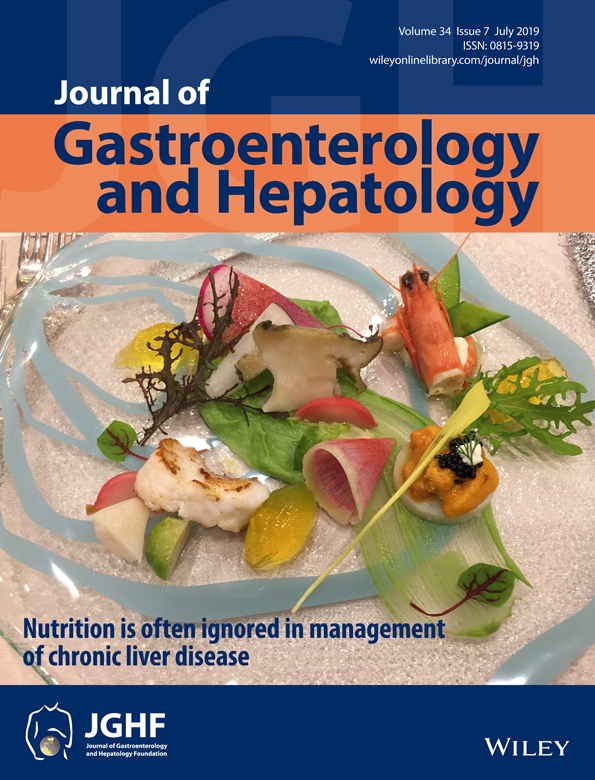Significance of hypovascular lesions on dynamic computed tomography and/or gadolinium ethoxybenzyl diethylenetriamine pentaacetic acid-enhanced magnetic resonance imaging in patients with hepatocellular carcinoma
Abstract
Background and Aim
The natural course and clinical implications of hypovascular lesions on dynamic computed tomography and/or gadolinium ethoxybenzyl diethylenetriamine pentaacetic acid-enhanced magnetic resonance imaging were investigated.
Methods
We followed the patients with hepatocellular carcinoma (HCC) who underwent hepatectomy between April 2009 and August 2012 to determine whether new classical HCCs developed from these unresected borderline lesions or emerged in different areas.
Results
One hundred and eleven patients with HCC were identified to have undergone examinations using both imaging methods before hepatic resection. A total of 54 hypovascular lesions were detected. Gadolinium ethoxybenzyl-enhanced magnetic resonance imaging detected 51 lesions, while dynamic computed tomography identified 21 lesions. Eleven lesions were resected at the time of the hepatectomy together with the main HCCs. Classical HCCs had developed from 52.5% of the 43 unresected lesions at 3 years after hepatic resection. Subsequently, we conducted a patient-by-patient analysis to compare the development of classical HCC from these hypovascular lesions and the emergence of de novo classical HCC in other areas. The 3-year occurrence rate was 62.2% for the former group and 55.0% for the latter group (P = 0.83). Thus, although 52.2% of these hypovascular lesions had developed into classical HCCs at 3 years after the initial hepatectomy, de novo HCCs also occurred at other sites. Furthermore, new hypovascular lesions emerged after hepatectomy in 18–29% of patients irrespective of the presence or absence of hypovascular lesions at hepatectomy.
Conclusions
It remains uncertain whether these hypovascular lesions should be resected together with the main tumors at the time of hepatectomy.




